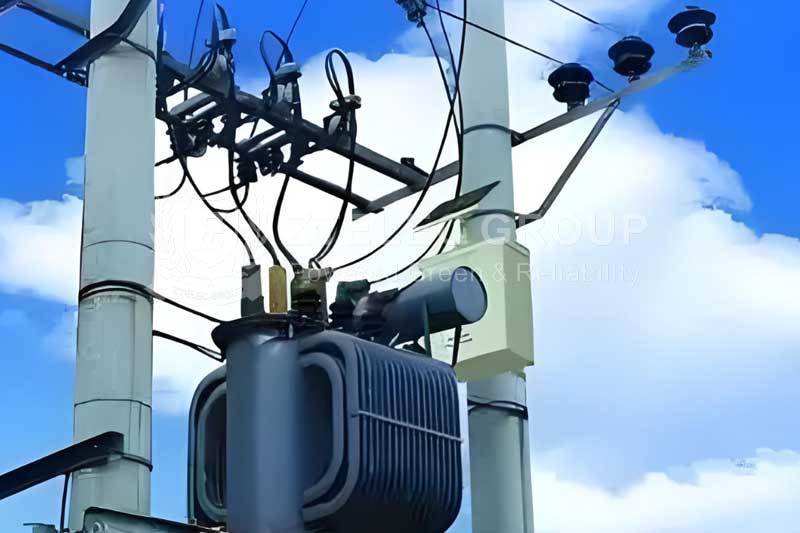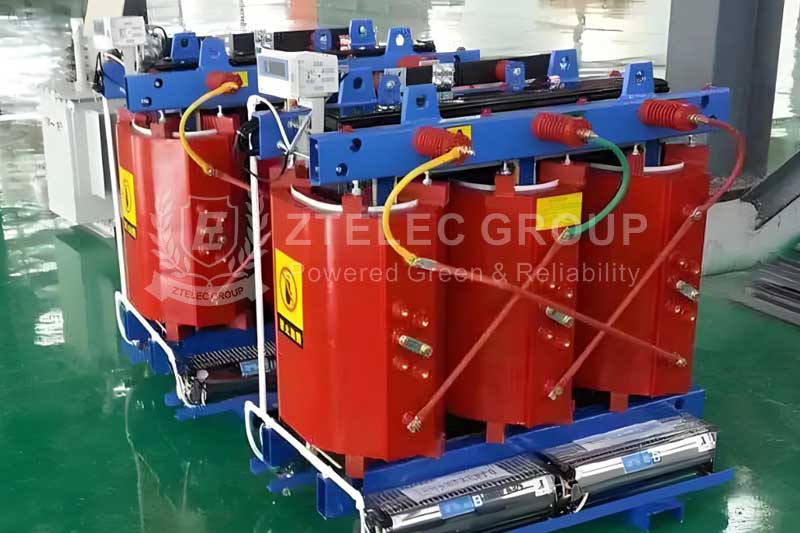What is the role of transformers in a power system?
Transformers are essential components in power systems, playing a critical role in the efficiency and reliability of modern power transmission and distribution. This article will explore the primary functions of transformers in power systems, including voltage regulation, power transmission, system protection, and their significance in the integration of renewable energy sources.

1. Voltage Regulation
One of the primary functions of transformers is to either step up or step down voltage. In power systems, power plants typically transmit electrical energy at relatively high voltages to locations far from the generation source in order to minimize energy losses caused by resistance. Step-up transformers effectively increase the electrical energy generated by power units to tens of thousands of volts. This high-voltage transmission significantly reduces power losses due to line resistance during long-distance transmission.
Conversely, when electrical energy reaches the target area, distribution transformers reduce the high voltage to levels that are suitable for end users. This process not only ensures efficient power transmission but also guarantees the safety and convenience of consumers when using electricity.
2. Power Transmission
Transformers play an essential role in power transmission within electrical systems. The architecture of these systems typically consists of multiple networks operating at various voltage levels. The presence of transformers enables these networks to connect and be compatible with one another, facilitating efficient power transfer. By using transformers, power grids of different voltages can interconnect, ensuring the flexibility and stability of the overall grid.
Additionally, transformers play a crucial role in ensuring the reliability of the power supply. When the power system experiences faults or abnormal loads, load redistribution through transformers facilitates effective power allocation, thereby preventing large-scale power interruptions. This flexible power transmission capability allows the power system to maintain normal operations under various conditions, ensuring a continuous electricity supply for users.

3. System Protection
The protective role of transformers in power systems is highly significant. Modern transformers are equipped with various protective devices designed to address abnormal conditions, such as current and voltage overloads, as well as short circuits. With built-in protection mechanisms, transformers can monitor anomalies within the system and promptly disconnect faulty circuits, thereby safeguarding the entire power system from potential damage.
For instance, differential protection, overcurrent protection, and temperature protection are essential measures to ensure the safe operation of transformers. These protective devices not only safeguard the transformers themselves but also effectively prevent fault currents from propagating throughout the entire grid. Consequently, transformers play a crucial role in enhancing the overall reliability of the power grid.
4. Integration of Renewable Energy Sources
With the global transformation of the power structure, an increasing amount of renewable energy, such as wind and solar power, is being integrated into power systems. These renewable energy sources often produce unstable voltage and frequency during generation, making the role of transformers particularly important in this context. Transformers can effectively regulate the power from these unstable sources, converting it into voltages and frequencies that are compatible with the grid.
In wind and photovoltaic power plants, transformers play a crucial role not only in stepping up voltage to inject electrical energy into high-voltage transmission networks but also in converting various types of electrical energy, such as direct current (DC) and alternating current (AC). This versatility enhances the efficient utilization of renewable energy and supports the global transition toward carbon neutrality.
Transformers play several crucial roles in power systems. They are essential for voltage regulation and power transmission, enhance the safety of power systems through protective devices, and provide vital technical support for the integration of renewable energy sources. As technology advances and society's demand for clean energy grows, the functions and roles of transformers are expected to become even more significant. Future power systems will increasingly depend on transformers as key components to achieve efficient, safe, and sustainable energy management.
- more+releated article
- 2025-12-13How to Select and Use Phenolic Cloth-base Lami
- 2025-12-13How Much Does Bakelite Sheet Cost? 2025 Price
- 2025-12-13Why are most 3240 epoxy boards yellow?
- 2025-12-13What are the Main Applications of FR4 Epoxy Bo
- 2025-12-13Why Does the Price of Insulating Paperboard Va
- 2025-12-13Heat-Resistant DDP Insulation Paper
- 2025-12-13Comparison of Heat-Resistant DDP Insulating Pa
- 2025-12-13G10 and FR4 Epoxy Boards: Commonly Used for Ge
- 2025-12-13The Price of Heat-Resistant DDP Insulation Pap
- 2025-12-13How to Choose Epoxy Laminate Materials for Gen





